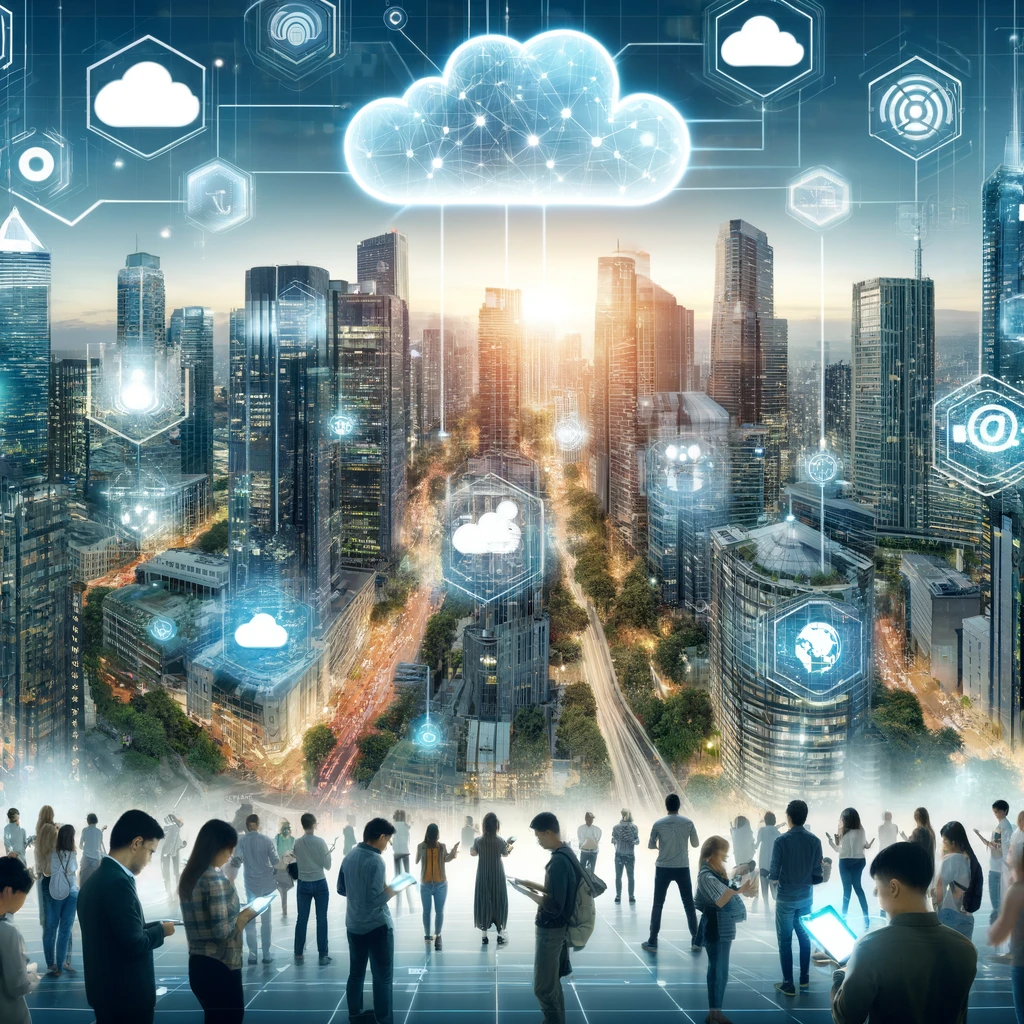Picture this scenario: You wake up, reach for your smartphone, and with just a few taps, you access a wealth of information, services, and applications that once seemed like pure fantasy. As you move through your day, you interact with intelligent systems that predict your needs, simplify tasks, and tailor experiences just for you. This scenario is not just possible but is our current reality, largely thanks to cloud computing.
To fully appreciate the significant changes brought about by cloud computing, let’s compare it with the past. Recall when computing capabilities were confined to your local computer. You had to install software manually, save data on physical drives, and you often faced storage limitations. Collaboration meant emailing files back and forth, and remote work was hardly feasible. Back then, technology often felt more restrictive than enabling.
Today, the scene has completely changed. Cloud computing offers nearly unlimited computing resources at your disposal. You are no longer limited by the capabilities of your personal devices. Freed from the limitations of physical hardware, you can use remote servers to store, process, and analyze data on a large scale, opening up previously unthinkable opportunities.
Consider the rise of big data and artificial intelligence. Previously, processing and analyzing vast amounts of data required hefty hardware and infrastructure investments. Now, with cloud computing, you can utilize the scalability and flexibility of cloud services to perform complex calculations, discover insights, and train advanced machine learning models. The cloud has made high-level analytics and AI accessible, enabling businesses of all sizes to make informed decisions and innovate.
Additionally, the cloud has transformed how we work and collaborate. The old days of being bound to a physical office are over. With cloud-based productivity tools and collaboration platforms, you can work from anywhere, anytime, and on any device. You can collaborate with colleagues around the globe in real time, sharing documents, holding virtual meetings, and accessing essential business applications with just a few clicks. The cloud has eliminated geographical barriers, ushering in an era of remote work and distributed teams.
But the influence of cloud computing goes beyond the business sector. It affects every aspect of our daily lives, changing how we interact with technology. Consider streaming services like Netflix and Spotify. The cloud gives you instant access to a vast collection of movies, TV shows, and music, all available on-demand directly to your device. The cloud has transformed our entertainment experiences, allowing for personalized content whenever and wherever we want.
Even our shopping habits have been reshaped by the cloud. E-commerce platforms like Amazon and Alibaba utilize the cloud’s scalability and dependability to offer smooth online shopping experiences. With a few taps on your smartphone, you can browse millions of products, read reviews, and receive your purchases within hours. The cloud has enabled businesses to reach a global market and consumers to access a broad range of products effortlessly.
As you experience this cloud-shaped environment, it’s evident that we are only beginning to discover what can be achieved. The cloud continues to evolve, expanding the boundaries of technological capabilities. From edge computing to serverless architectures, future advancements promise to further redefine how we live and work.
So, as you go about your day, take a moment to reflect on the significant journey cloud computing has taken us on. From the past’s limitations to the present’s vast opportunities, the cloud has been the driving force behind a technological transformation that has positioned us in a state-of-the-art environment. Prepare yourself to witness even more astonishing innovations in the coming years. The future has arrived, and it is driven by the cloud.
